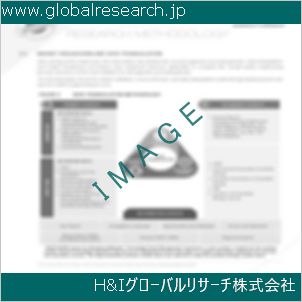1 市場概要
1.1 製品概要と範囲
1.2 市場推定の注意点と基準年
1.3 タイプ別市場分析
1.3.1 概要:グローバルなバスバー絶縁体の消費価値(タイプ別):2020年対2024年対2031年
1.3.2 セラミックベース絶縁体
1.3.3 複合材料
1.3.4 プラスチック絶縁体
1.4 用途別市場分析
1.4.1 概要:グローバルなバスバー絶縁体の消費量(用途別):2020年対2024年対2031年
1.4.2 電気機器
1.4.3 HVAC
1.4.4 輸送
1.4.5 その他
1.5 グローバルバスバー絶縁体市場規模と予測
1.5.1 グローバルバスバー絶縁体の消費額(2020年、2024年、2031年)
1.5.2 グローバルバスバー絶縁体の販売数量(2020年~2031年)
1.5.3 グローバルバスバー絶縁体の平均価格(2020年~2031年)
2 メーカープロファイル
2.1 ABB
2.1.1 ABBの詳細
2.1.2 ABBの主要事業
2.1.3 ABB バスバー絶縁体の製品とサービス
2.1.4 ABB バスバー絶縁体の販売数量、平均価格、売上高、粗利益率、市場シェア(2020-2025)
2.1.5 ABBの最近の動向/更新
2.2 GE
2.2.1 GEの詳細
2.2.2 GEの主要事業
2.2.3 GE バスバー絶縁体製品およびサービス
2.2.4 GE バスバー絶縁体の販売数量、平均価格、売上高、粗利益率、市場シェア(2020-2025)
2.2.5 GEの最近の動向/更新
2.3 Mar-Bal
2.3.1 Mar-Balの詳細
2.3.2 Mar-Bal 主な事業
2.3.3 Mar-Bal バスバー絶縁体の製品とサービス
2.3.4 Mar-Bal バスバー絶縁体の販売数量、平均価格、売上高、粗利益率、市場シェア(2020-2025)
2.3.5 Mar-Balの最近の動向/更新
2.4 ザ・グンド・カンパニー
2.4.1 ザ・グンド・カンパニーの詳細
2.4.2 ザ・グンド・カンパニーの主要事業
2.4.3 ザ・グンド・カンパニーのバスバー絶縁体製品およびサービス
2.4.4 ガン・カンパニーのバスバースタンドオフ絶縁体の販売数量、平均価格、売上高、粗利益率、市場シェア(2020-2025)
2.4.5 ガン・カンパニーの最近の動向/更新
2.5 中央モローニー
2.5.1 中央モローニーの詳細
2.5.2 中央モローニーの主要事業
2.5.3 中央モローニーのバスバー絶縁体製品およびサービス
2.5.4 中央モローニー バスバースタンドオフ絶縁体の販売数量、平均価格、売上高、粗利益率、市場シェア(2020-2025)
2.5.5 中央モローニーの最近の動向/更新
2.6 ストーム・パワー・コンポーネント
2.6.1 ストーム・パワー・コンポーネントの詳細
2.6.2 ストームパワーコンポーネントの主要事業
2.6.3 ストーム・パワー・コンポーネントのバスバー絶縁体製品およびサービス
2.6.4 ストーム・パワー・コンポーネント バスバー絶縁体の販売数量、平均価格、売上高、粗利益率、市場シェア(2020-2025)
2.6.5 ストームパワーコンポーネントの最近の動向/更新
2.7 リンジー・システムズ
2.7.1 リンジー・システムズの詳細
2.7.2 リンジー・システムズの主要事業
2.7.3 リンジー・システムズ バスバー絶縁体製品およびサービス
2.7.4 リンジー・システムズ バスバースタンドオフ絶縁体の販売数量、平均価格、売上高、粗利益率、市場シェア(2020-2025)
2.7.5 リンジー・システムズの最近の動向/更新
2.8 ターメイト・リミテッド
2.8.1 ターメイト・リミテッドの詳細
2.8.2 ターメイト・リミテッドの主要事業
2.8.3 ターメイト・リミテッド バスバー絶縁支持体製品およびサービス
2.8.4 Termate Limited バスバー絶縁体の販売数量、平均価格、売上高、粗利益率、市場シェア(2020-2025)
2.8.5 ターメイト・リミテッドの最近の動向/更新
2.9 NVENT
2.9.1 NVENTの詳細
2.9.2 NVENTの主要事業
2.9.3 NVENT バスバー絶縁体製品およびサービス
2.9.4 NVENT バスバー絶縁体の販売数量、平均価格、売上高、粗利益率、市場シェア(2020-2025)
2.9.5 NVENT の最近の動向/最新情報
2.10 デービス・モールディング
2.10.1 デイビス・モールドの詳細
2.10.2 デイビス・モールドの主な事業
2.10.3 デービス・モールディングのバスバースタンドオフ絶縁体製品およびサービス
2.10.4 デービス・モールドのバスバースタンドオフ絶縁体の販売数量、平均価格、収益、粗利益率、市場シェア(2020年~2025年
2.10.5 デービス・モールディングの最近の動向/最新情報
2.11 GRT ジェネシス
2.11.1 GRT Genesis の詳細
2.11.2 GRT Genesis の主な事業
2.11.3 GRT Genesis のバスバースタンドオフ絶縁体製品およびサービス
2.11.4 GRT Genesis のバスバースタンドオフ絶縁体の販売数量、平均価格、収益、粗利益率、市場シェア(2020 年~2025 年
2.11.5 GRT Genesisの最近の動向/更新
2.12 ペン
2.12.1 Pennの詳細
2.12.2 Penn 主な事業
2.12.3 Penn バスバー絶縁体製品およびサービス
2.12.4 Penn バスバー絶縁体の販売数量、平均価格、売上高、粗利益率、市場シェア(2020-2025)
2.12.5 ペン最近の動向/更新
3 競争環境:バスバー絶縁体(メーカー別)
3.1 グローバル バスバー絶縁体販売数量(メーカー別)(2020-2025)
3.2 グローバル バスバー絶縁体の売上高(メーカー別)(2020-2025)
3.3 グローバルなバスバー絶縁体の平均価格(メーカー別)(2020-2025)
3.4 市場シェア分析(2024年)
3.4.1 メーカー別バスバー絶縁体の出荷量(売上高:$MM)と市場シェア(%):2024
3.4.2 2024年のバスバー絶縁支持体メーカー上位3社の市場シェア
3.4.3 2024年のバスバー絶縁体メーカーの市場シェア上位6社
3.5 バスバー絶縁体市場:全体的な企業足跡分析
3.5.1 バスバー絶縁体の地域別市場シェア
3.5.2 バスバー絶縁体市場:企業製品タイプ別足跡
3.5.3 バスバー絶縁支持体市場:企業製品用途別足跡
3.6 新規参入企業と市場参入障壁
3.7 合併、買収、契約、および協力関係
4 地域別消費分析
4.1 地域別グローバルバスバー絶縁体市場規模
4.1.1 地域別グローバルバスバー絶縁体販売数量(2020-2031)
4.1.2 地域別グローバルバスバー絶縁体の消費額(2020-2031)
4.1.3 地域別グローバルバスバー絶縁体の平均価格(2020-2031)
4.2 北米のバスバー絶縁体消費額(2020-2031)
4.3 欧州のバスバー絶縁体の消費量(2020-2031)
4.4 アジア太平洋地域 バスバー絶縁体の消費量(2020-2031)
4.5 南米 バスバー絶縁支持体の消費額(2020-2031)
4.6 中東・アフリカ バスバー絶縁支持体消費量(2020-2031)
5 市場セグメント別(タイプ)
5.1 グローバル バスバー絶縁体の販売数量(タイプ別)(2020-2031)
5.2 グローバル バスバー絶縁体の消費量(タイプ別)(2020-2031)
5.3 グローバル バスバー絶縁体の平均価格(タイプ別)(2020-2031)
6 市場セグメント(用途別)
6.1 グローバル バスバー絶縁支持体の販売数量(用途別)(2020-2031)
6.2 グローバル バスバー絶縁支持体の用途別消費額(2020-2031)
6.3 グローバル バスバー絶縁体の平均価格(用途別)(2020-2031)
7 北米
7.1 北米 バスバー絶縁体の販売数量(タイプ別)(2020-2031)
7.2 北米 バスバー絶縁体の販売数量(用途別)(2020-2031)
7.3 北米のバスバー絶縁体の市場規模(国別)
7.3.1 北米 バスバー絶縁支持体 販売数量(国別)(2020-2031)
7.3.2 北米バスバー絶縁支持体の国別消費額(2020-2031)
7.3.3 アメリカ市場規模と予測(2020-2031)
7.3.4 カナダ市場規模と予測(2020-2031)
7.3.5 メキシコ市場規模と予測(2020-2031)
8 ヨーロッパ
8.1 欧州 バスバー絶縁体の販売数量(種類別)(2020-2031)
8.2 欧州のバスバー絶縁体の販売数量(用途別)(2020-2031)
8.3 欧州バスバー絶縁体の市場規模(国別)
8.3.1 ヨーロッパのバスバー絶縁体の販売数量(国別)(2020-2031)
8.3.2 欧州のバスバー絶縁支持体の消費額(国別)(2020-2031)
8.3.3 ドイツ市場規模と予測(2020-2031)
8.3.4 フランス市場規模と予測(2020-2031)
8.3.5 イギリス市場規模と予測(2020-2031)
8.3.6 ロシア市場規模と予測(2020-2031)
8.3.7 イタリア市場規模と予測(2020-2031)
9 アジア太平洋
9.1 アジア太平洋地域 バスバー絶縁体の販売数量(種類別)(2020-2031)
9.2 アジア太平洋地域 バスバー絶縁体の販売数量(用途別)(2020-2031)
9.3 アジア太平洋地域 バスバー絶縁体の市場規模(地域別)
9.3.1 アジア太平洋地域 バスバー絶縁体の販売数量(地域別)(2020-2031)
9.3.2 アジア太平洋地域 バスバー絶縁支持体の地域別消費額(2020-2031)
9.3.3 中国市場規模と予測(2020-2031)
9.3.4 日本市場規模と予測(2020-2031)
9.3.5 韓国市場規模と予測(2020-2031)
9.3.6 インド市場規模と予測(2020-2031)
9.3.7 東南アジア市場規模と予測(2020-2031)
9.3.8 オーストラリア市場規模と予測(2020-2031)
10 南米
10.1 南米 バスバー絶縁体の販売数量(種類別)(2020-2031)
10.2 南米 バスバー絶縁体の販売数量(用途別)(2020-2031)
10.3 南米 バスバー絶縁体の市場規模(国別)
10.3.1 南米のバスバー絶縁体の販売数量(国別)(2020-2031)
10.3.2 南米 バスバー絶縁支持体の消費額(国別)(2020-2031)
10.3.3 ブラジル市場規模と予測(2020-2031)
10.3.4 アルゼンチン市場規模と予測(2020-2031)
11 中東・アフリカ
11.1 中東・アフリカ バスバー絶縁体の販売数量(種類別)(2020-2031)
11.2 中東・アフリカ バスバー絶縁体の販売数量(用途別)(2020-2031)
11.3 中東・アフリカ バスバー絶縁体の市場規模(国別)
11.3.1 中東・アフリカ バスバー絶縁体販売数量(国別)(2020-2031)
11.3.2 中東・アフリカ地域 バスバー絶縁体の消費額(国別)(2020-2031)
11.3.3 トルコ市場規模と予測(2020-2031)
11.3.4 エジプト市場規模と予測(2020-2031)
11.3.5 サウジアラビア市場規模と予測(2020-2031)
11.3.6 南アフリカ市場規模と予測(2020-2031)
12 市場動向
12.1 バスバー絶縁体市場ドライバー
12.2 バスバー絶縁体の市場制約
12.3 バスバー絶縁体のトレンド分析
12.4 ポーターの5つの力分析
12.4.1 新規参入の脅威
12.4.2 供給者の交渉力
12.4.3 購入者の交渉力
12.4.4 代替品の脅威
12.4.5 競争の激化
13 原材料と産業チェーン
13.1 バスバー絶縁体の原材料と主要メーカー
13.2 バスバー絶縁体の製造コストの割合
13.3 バスバー絶縁体の製造プロセス
13.4 産業バリューチェーン分析
14 流通チャネル別出荷量
14.1 販売チャネル
14.1.1 直接エンドユーザー向け
14.1.2 卸売業者
14.2 バスバー絶縁体の典型的な販売代理店
14.3 バスバー絶縁体の典型的な顧客
15 研究結果と結論
16 付録
16.1 方法論
16.2 研究プロセスとデータソース
16.3 免責事項
1.1 Product Overview and Scope
1.2 Market Estimation Caveats and Base Year
1.3 Market Analysis by Type
1.3.1 Overview: Global Busbar Standoff Insulator Consumption Value by Type: 2020 Versus 2024 Versus 2031
1.3.2 Ceramic-Based Insulator
1.3.3 Composite Material
1.3.4 Plastic Insulator
1.4 Market Analysis by Application
1.4.1 Overview: Global Busbar Standoff Insulator Consumption Value by Application: 2020 Versus 2024 Versus 2031
1.4.2 Electrical Appliances
1.4.3 HVAC
1.4.4 Transportation
1.4.5 Others
1.5 Global Busbar Standoff Insulator Market Size & Forecast
1.5.1 Global Busbar Standoff Insulator Consumption Value (2020 & 2024 & 2031)
1.5.2 Global Busbar Standoff Insulator Sales Quantity (2020-2031)
1.5.3 Global Busbar Standoff Insulator Average Price (2020-2031)
2 Manufacturers Profiles
2.1 ABB
2.1.1 ABB Details
2.1.2 ABB Major Business
2.1.3 ABB Busbar Standoff Insulator Product and Services
2.1.4 ABB Busbar Standoff Insulator Sales Quantity, Average Price, Revenue, Gross Margin and Market Share (2020-2025)
2.1.5 ABB Recent Developments/Updates
2.2 GE
2.2.1 GE Details
2.2.2 GE Major Business
2.2.3 GE Busbar Standoff Insulator Product and Services
2.2.4 GE Busbar Standoff Insulator Sales Quantity, Average Price, Revenue, Gross Margin and Market Share (2020-2025)
2.2.5 GE Recent Developments/Updates
2.3 Mar-Bal
2.3.1 Mar-Bal Details
2.3.2 Mar-Bal Major Business
2.3.3 Mar-Bal Busbar Standoff Insulator Product and Services
2.3.4 Mar-Bal Busbar Standoff Insulator Sales Quantity, Average Price, Revenue, Gross Margin and Market Share (2020-2025)
2.3.5 Mar-Bal Recent Developments/Updates
2.4 The Gund Company
2.4.1 The Gund Company Details
2.4.2 The Gund Company Major Business
2.4.3 The Gund Company Busbar Standoff Insulator Product and Services
2.4.4 The Gund Company Busbar Standoff Insulator Sales Quantity, Average Price, Revenue, Gross Margin and Market Share (2020-2025)
2.4.5 The Gund Company Recent Developments/Updates
2.5 Central Moloney
2.5.1 Central Moloney Details
2.5.2 Central Moloney Major Business
2.5.3 Central Moloney Busbar Standoff Insulator Product and Services
2.5.4 Central Moloney Busbar Standoff Insulator Sales Quantity, Average Price, Revenue, Gross Margin and Market Share (2020-2025)
2.5.5 Central Moloney Recent Developments/Updates
2.6 Storm Power Components
2.6.1 Storm Power Components Details
2.6.2 Storm Power Components Major Business
2.6.3 Storm Power Components Busbar Standoff Insulator Product and Services
2.6.4 Storm Power Components Busbar Standoff Insulator Sales Quantity, Average Price, Revenue, Gross Margin and Market Share (2020-2025)
2.6.5 Storm Power Components Recent Developments/Updates
2.7 Lindsey Systems
2.7.1 Lindsey Systems Details
2.7.2 Lindsey Systems Major Business
2.7.3 Lindsey Systems Busbar Standoff Insulator Product and Services
2.7.4 Lindsey Systems Busbar Standoff Insulator Sales Quantity, Average Price, Revenue, Gross Margin and Market Share (2020-2025)
2.7.5 Lindsey Systems Recent Developments/Updates
2.8 Termate Limited
2.8.1 Termate Limited Details
2.8.2 Termate Limited Major Business
2.8.3 Termate Limited Busbar Standoff Insulator Product and Services
2.8.4 Termate Limited Busbar Standoff Insulator Sales Quantity, Average Price, Revenue, Gross Margin and Market Share (2020-2025)
2.8.5 Termate Limited Recent Developments/Updates
2.9 NVENT
2.9.1 NVENT Details
2.9.2 NVENT Major Business
2.9.3 NVENT Busbar Standoff Insulator Product and Services
2.9.4 NVENT Busbar Standoff Insulator Sales Quantity, Average Price, Revenue, Gross Margin and Market Share (2020-2025)
2.9.5 NVENT Recent Developments/Updates
2.10 Davies Molding
2.10.1 Davies Molding Details
2.10.2 Davies Molding Major Business
2.10.3 Davies Molding Busbar Standoff Insulator Product and Services
2.10.4 Davies Molding Busbar Standoff Insulator Sales Quantity, Average Price, Revenue, Gross Margin and Market Share (2020-2025)
2.10.5 Davies Molding Recent Developments/Updates
2.11 GRT Genesis
2.11.1 GRT Genesis Details
2.11.2 GRT Genesis Major Business
2.11.3 GRT Genesis Busbar Standoff Insulator Product and Services
2.11.4 GRT Genesis Busbar Standoff Insulator Sales Quantity, Average Price, Revenue, Gross Margin and Market Share (2020-2025)
2.11.5 GRT Genesis Recent Developments/Updates
2.12 Penn
2.12.1 Penn Details
2.12.2 Penn Major Business
2.12.3 Penn Busbar Standoff Insulator Product and Services
2.12.4 Penn Busbar Standoff Insulator Sales Quantity, Average Price, Revenue, Gross Margin and Market Share (2020-2025)
2.12.5 Penn Recent Developments/Updates
3 Competitive Environment: Busbar Standoff Insulator by Manufacturer
3.1 Global Busbar Standoff Insulator Sales Quantity by Manufacturer (2020-2025)
3.2 Global Busbar Standoff Insulator Revenue by Manufacturer (2020-2025)
3.3 Global Busbar Standoff Insulator Average Price by Manufacturer (2020-2025)
3.4 Market Share Analysis (2024)
3.4.1 Producer Shipments of Busbar Standoff Insulator by Manufacturer Revenue ($MM) and Market Share (%): 2024
3.4.2 Top 3 Busbar Standoff Insulator Manufacturer Market Share in 2024
3.4.3 Top 6 Busbar Standoff Insulator Manufacturer Market Share in 2024
3.5 Busbar Standoff Insulator Market: Overall Company Footprint Analysis
3.5.1 Busbar Standoff Insulator Market: Region Footprint
3.5.2 Busbar Standoff Insulator Market: Company Product Type Footprint
3.5.3 Busbar Standoff Insulator Market: Company Product Application Footprint
3.6 New Market Entrants and Barriers to Market Entry
3.7 Mergers, Acquisition, Agreements, and Collaborations
4 Consumption Analysis by Region
4.1 Global Busbar Standoff Insulator Market Size by Region
4.1.1 Global Busbar Standoff Insulator Sales Quantity by Region (2020-2031)
4.1.2 Global Busbar Standoff Insulator Consumption Value by Region (2020-2031)
4.1.3 Global Busbar Standoff Insulator Average Price by Region (2020-2031)
4.2 North America Busbar Standoff Insulator Consumption Value (2020-2031)
4.3 Europe Busbar Standoff Insulator Consumption Value (2020-2031)
4.4 Asia-Pacific Busbar Standoff Insulator Consumption Value (2020-2031)
4.5 South America Busbar Standoff Insulator Consumption Value (2020-2031)
4.6 Middle East & Africa Busbar Standoff Insulator Consumption Value (2020-2031)
5 Market Segment by Type
5.1 Global Busbar Standoff Insulator Sales Quantity by Type (2020-2031)
5.2 Global Busbar Standoff Insulator Consumption Value by Type (2020-2031)
5.3 Global Busbar Standoff Insulator Average Price by Type (2020-2031)
6 Market Segment by Application
6.1 Global Busbar Standoff Insulator Sales Quantity by Application (2020-2031)
6.2 Global Busbar Standoff Insulator Consumption Value by Application (2020-2031)
6.3 Global Busbar Standoff Insulator Average Price by Application (2020-2031)
7 North America
7.1 North America Busbar Standoff Insulator Sales Quantity by Type (2020-2031)
7.2 North America Busbar Standoff Insulator Sales Quantity by Application (2020-2031)
7.3 North America Busbar Standoff Insulator Market Size by Country
7.3.1 North America Busbar Standoff Insulator Sales Quantity by Country (2020-2031)
7.3.2 North America Busbar Standoff Insulator Consumption Value by Country (2020-2031)
7.3.3 United States Market Size and Forecast (2020-2031)
7.3.4 Canada Market Size and Forecast (2020-2031)
7.3.5 Mexico Market Size and Forecast (2020-2031)
8 Europe
8.1 Europe Busbar Standoff Insulator Sales Quantity by Type (2020-2031)
8.2 Europe Busbar Standoff Insulator Sales Quantity by Application (2020-2031)
8.3 Europe Busbar Standoff Insulator Market Size by Country
8.3.1 Europe Busbar Standoff Insulator Sales Quantity by Country (2020-2031)
8.3.2 Europe Busbar Standoff Insulator Consumption Value by Country (2020-2031)
8.3.3 Germany Market Size and Forecast (2020-2031)
8.3.4 France Market Size and Forecast (2020-2031)
8.3.5 United Kingdom Market Size and Forecast (2020-2031)
8.3.6 Russia Market Size and Forecast (2020-2031)
8.3.7 Italy Market Size and Forecast (2020-2031)
9 Asia-Pacific
9.1 Asia-Pacific Busbar Standoff Insulator Sales Quantity by Type (2020-2031)
9.2 Asia-Pacific Busbar Standoff Insulator Sales Quantity by Application (2020-2031)
9.3 Asia-Pacific Busbar Standoff Insulator Market Size by Region
9.3.1 Asia-Pacific Busbar Standoff Insulator Sales Quantity by Region (2020-2031)
9.3.2 Asia-Pacific Busbar Standoff Insulator Consumption Value by Region (2020-2031)
9.3.3 China Market Size and Forecast (2020-2031)
9.3.4 Japan Market Size and Forecast (2020-2031)
9.3.5 South Korea Market Size and Forecast (2020-2031)
9.3.6 India Market Size and Forecast (2020-2031)
9.3.7 Southeast Asia Market Size and Forecast (2020-2031)
9.3.8 Australia Market Size and Forecast (2020-2031)
10 South America
10.1 South America Busbar Standoff Insulator Sales Quantity by Type (2020-2031)
10.2 South America Busbar Standoff Insulator Sales Quantity by Application (2020-2031)
10.3 South America Busbar Standoff Insulator Market Size by Country
10.3.1 South America Busbar Standoff Insulator Sales Quantity by Country (2020-2031)
10.3.2 South America Busbar Standoff Insulator Consumption Value by Country (2020-2031)
10.3.3 Brazil Market Size and Forecast (2020-2031)
10.3.4 Argentina Market Size and Forecast (2020-2031)
11 Middle East & Africa
11.1 Middle East & Africa Busbar Standoff Insulator Sales Quantity by Type (2020-2031)
11.2 Middle East & Africa Busbar Standoff Insulator Sales Quantity by Application (2020-2031)
11.3 Middle East & Africa Busbar Standoff Insulator Market Size by Country
11.3.1 Middle East & Africa Busbar Standoff Insulator Sales Quantity by Country (2020-2031)
11.3.2 Middle East & Africa Busbar Standoff Insulator Consumption Value by Country (2020-2031)
11.3.3 Turkey Market Size and Forecast (2020-2031)
11.3.4 Egypt Market Size and Forecast (2020-2031)
11.3.5 Saudi Arabia Market Size and Forecast (2020-2031)
11.3.6 South Africa Market Size and Forecast (2020-2031)
12 Market Dynamics
12.1 Busbar Standoff Insulator Market Drivers
12.2 Busbar Standoff Insulator Market Restraints
12.3 Busbar Standoff Insulator Trends Analysis
12.4 Porters Five Forces Analysis
12.4.1 Threat of New Entrants
12.4.2 Bargaining Power of Suppliers
12.4.3 Bargaining Power of Buyers
12.4.4 Threat of Substitutes
12.4.5 Competitive Rivalry
13 Raw Material and Industry Chain
13.1 Raw Material of Busbar Standoff Insulator and Key Manufacturers
13.2 Manufacturing Costs Percentage of Busbar Standoff Insulator
13.3 Busbar Standoff Insulator Production Process
13.4 Industry Value Chain Analysis
14 Shipments by Distribution Channel
14.1 Sales Channel
14.1.1 Direct to End-User
14.1.2 Distributors
14.2 Busbar Standoff Insulator Typical Distributors
14.3 Busbar Standoff Insulator Typical Customers
15 Research Findings and Conclusion
16 Appendix
16.1 Methodology
16.2 Research Process and Data Source
16.3 Disclaimer
| ※参考情報 バスバースタンドオフ絶縁体は、電力および通信の分野で広く用いられている重要なコンポーネントです。このデバイスは、電力設備や通信機器において、導体と機械部品の間に絶縁を提供し、ショートや漏れ電流を防ぐ役割を果たします。以下にバスバースタンドオフ絶縁体の定義、特徴、種類、用途、関連技術について詳しく説明します。 バスバースタンドオフ絶縁体とは、一般的にバスバーと呼ばれる導体を支持し、その周囲に絶縁性の距離を持たせるために設計された支持絶縁体のことを指します。この構造により、バスバーが地面や他の導体に接触することを防ぎ、安全性を確保します。絶縁体は通常、強度が高く、耐圧性に優れた材料で作られており、外部環境に対する耐久性も求められます。 このバスバースタンドオフ絶縁体の大きな特徴の一つは、その設計の柔軟性です。多様なサイズ、形状、そして取り付け方式があり、特定のアプリケーションや環境条件に合わせた製品を選ぶことができます。また、温度変化や湿度、化学薬品に対する耐性も求められ、これにより長期間にわたる信頼性が保障されます。通常、絶縁体はプラスチックやセラミックなどの絶縁性材料から作られ、場合によっては特殊な加工が施されることもあります。 種類については、バスバースタンドオフ絶縁体は、主にインサレータと呼ばれる独立した部品として存在するものと、組み込み型として供給されるものに分けられます。独立型インサレータは、それ自体が設置される地点に設けられ、バスバーを支持する役割を果たします。組み込み型は、電力機器や装置の一部として前もって組み込まれており、設置が容易です。また、特定の条件下で使用されるように設計された特殊な絶縁体も存在します。たとえば、環境条件により高い耐熱性や耐寒性が求められる場合、それに応じた材料が選定されます。 用途については、バスバースタンドオフ絶縁体は多様な場面で使用されます。主に電力システム、特に変電所や配電ネットワークにおいて重要な役割を果たしています。高電圧のバスバーを支持し、同時に絶縁を提供することで、全体の電力システムの安全性と効率性を高めることができます。また、通信設備やデータセンターでも、信号を妨害しないようにバスバーを支持するために利用されています。このように、様々な分野で利用されるバスバースタンドオフ絶縁体は、電力の供給や通信の信頼性に欠かせない存在となっています。 関連技術としては、電気絶縁技術がバスバースタンドオフ絶縁体の設計と製造に大きく寄与しています。絶縁体の材料としては、ポリマー、セラミック、ガラスコンポジットなどが使用され、これらの選定には耐圧性や耐久性、絶縁性能が考慮されます。さらに、品質管理や試験方法も重要な要素であり、厳格な基準が設けられています。絶縁体の性能を評価するためには、全高電圧試験や耐熱試験、機械的強度試験などが行われます。また、製造技術の進展により、より高性能な絶縁体の設計が進められる傾向にあります。 まとめとして、バスバースタンドオフ絶縁体は、電力や通信分野において極めて重要な役割を果たす部品です。その耐久性や柔軟性により、様々な条件下での安全な操作が保証され、信頼性の高い電力供給やデータ通信を支える基盤となっています。これからも技術革新が進む中で、バスバースタンドオフ絶縁体の重要性はさらに増していくことでしょう。安全で効率的な電力システムを実現するために、引き続きその開発と適用が進められていくことが期待されます。 |
❖ 免責事項 ❖
http://www.globalresearch.jp/disclaimer












